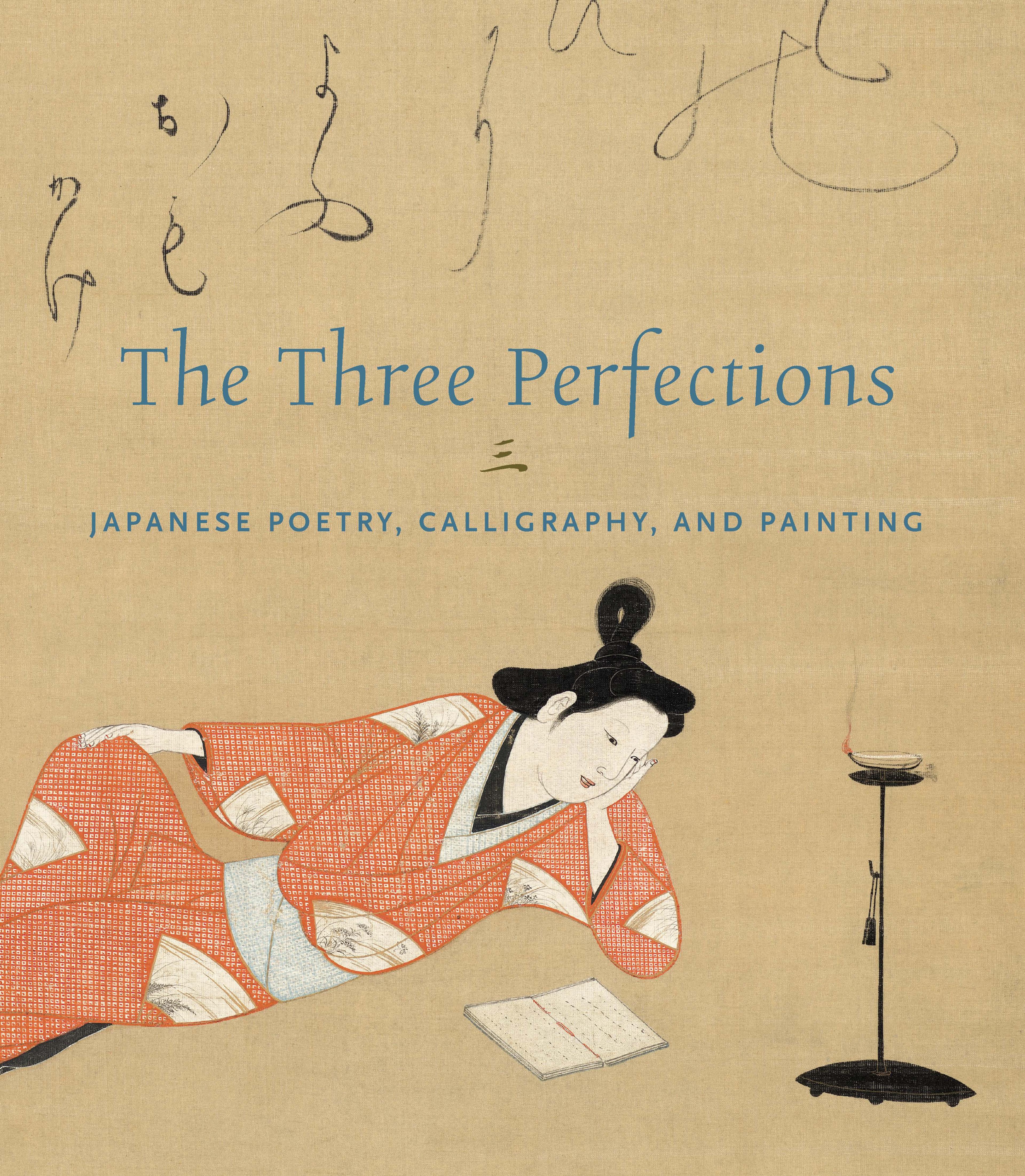Illustrated Handscrolls of The Tale of Genji
This deluxe set of five handscrolls comprises text excerpts and related illustrations for all fifty-four chapters of The Tale of Genji, the monumental classic of Japanese literature of the early eleventh century authored by the court lady Murasaki Shikibu. Most remarkably, all sections are preserved intact and in correct narrative sequence. Each excerpted passage of prose mixed with poems—usually describing a crucial turning point in the plot—anticipates the painted vignette that follows. The highly skilled and refined courtly calligraphy, betraying not an instance of scribal hesitation, but never rushed or sloppy, bespeaks the practiced hand of a high-ranking woman of the palace or a wealthy warlord’s retinue who was fully familiar with courtly handwriting models. The convention of “scattered writing” (chirashi-gaki), a specialty of female calligraphers through the ages into early modern times, in which the columns of script are playfully rearranged in staggered registers across the surface of paper to create a dynamic visual effect, is magnificently executed here.
The paintings do not appear to be the output of a professional artist of either the Tosa or Kano schools, as might be expected of such a major undertaking. Rather, they betray an individual and idiosyncratic painting style that we can confidently assume was brushed by Ryūjo herself. Clearly conversant with the conventions of courtly yamato-e (“Japanese style painting”), the artist was also apparently familiar with the already established iconography of the tale as utilized by the Tosa school, though in several places the artist diverged from the usual way of depicting scenes. Certain stylistic elements indicate that the artist also had familiarity with the work of the influential Kano school in Kyoto, which was by this time starting to usurp the Tosa studio’s monopoly.
Although the earliest known illustrations of The Tale of Genji, from the early twelfth century, were created in the handscroll format, there are surprisingly few dated, surviving examples in this format from before the seventeenth century. This set of handscrolls constitutes the oldest dated example of a complete cycle of Genji illustrations in polychrome, with accompanying text selections, to survive intact.
The paintings do not appear to be the output of a professional artist of either the Tosa or Kano schools, as might be expected of such a major undertaking. Rather, they betray an individual and idiosyncratic painting style that we can confidently assume was brushed by Ryūjo herself. Clearly conversant with the conventions of courtly yamato-e (“Japanese style painting”), the artist was also apparently familiar with the already established iconography of the tale as utilized by the Tosa school, though in several places the artist diverged from the usual way of depicting scenes. Certain stylistic elements indicate that the artist also had familiarity with the work of the influential Kano school in Kyoto, which was by this time starting to usurp the Tosa studio’s monopoly.
Although the earliest known illustrations of The Tale of Genji, from the early twelfth century, were created in the handscroll format, there are surprisingly few dated, surviving examples in this format from before the seventeenth century. This set of handscrolls constitutes the oldest dated example of a complete cycle of Genji illustrations in polychrome, with accompanying text selections, to survive intact.
Artwork Details
- 龍女書 源氏物語絵巻
- Title: Illustrated Handscrolls of The Tale of Genji
- Artist: Ryūjo (Tatsujo) (Japanese, active late 16th century)
- Period: Momoyama period (1573–1615)
- Date: 1594
- Culture: Japan
- Medium: Five handscrolls; ink and color on paper (illustrations); ink on paper (texts)
- Dimensions: Scroll 1: 12 1/2 in. × 34 ft. 10 9/16 in. (31.8 × 1063.1 cm)
Scroll 2: 12 1/2 in. × 34 ft. 11 3/8 in. (31.8 × 1065.2 cm)
Scroll 3: 12 1/2 in. × 34 ft. 7 9/16 in. (31.8 × 1055.6 cm)
Scroll 4: 12 1/2 in. × 34 ft. 8 1/16 in. (31.8 × 1056.8 cm)
Scroll 5: 12 1/2 in. × 31 ft. 6 1/16 in. (31.8 × 960.3 cm) - Classification: Paintings
- Credit Line: Purchase, Mary and James G. Wallach Foundation Gift, in celebration of the Museum’s 150th Anniversary, 2020
- Object Number: 2020.360a–e
- Curatorial Department: Asian Art
More Artwork
Research Resources
The Met provides unparalleled resources for research and welcomes an international community of students and scholars. The Met's Open Access API is where creators and researchers can connect to the The Met collection. Open Access data and public domain images are available for unrestricted commercial and noncommercial use without permission or fee.
To request images under copyright and other restrictions, please use this Image Request form.
Feedback
We continue to research and examine historical and cultural context for objects in The Met collection. If you have comments or questions about this object record, please contact us using the form below. The Museum looks forward to receiving your comments.
